The mountain course of the river has strong current, stoney-rocky bed, and beside these in the crystal-clear water there are relatively few nutrients. In consequence of this here only the species of those groups of small beings can be found, which have been well adapted to such an environment, adhering or fixing close to the bed. The diversity of these however, can be very great. Together with this low number of species nad individuals is typical of this section in general. Most important elements of the invertebrate fauna are larvae of ephemerids or mayflies (Ephemeroptera), false-ephemerids or stoneflies (Plecoptera) and phryganeans of caddisflies (Trichoptera). Among this three groups the large number of ephemerids (about 50) is prominent on the full length of the upper course of the Tisza. Ephemerids are ancient, conservative members of insects. Most species are very sensitive, cannot tolerate even the slightest changes in the environment. They prefer primarily quick waters with rich oxygen supply and low organic matter content, they cannot tolerate organic or toxic contaminations even for a short time, so they are excellent indicators of water quality. Such an indicator species on the uppermost course of the Tisza is "bat-winged ephemerid" (Oligoneuriella rhenana). Number of species of stoneflies or false ephemerids falls much shorter of that of true ephemerids, the individuals of only few species are typical (Protoneura, Leuctra and Perla species). Going down the river the dominant species of the above mentioned groups change continuously. These changes sign well 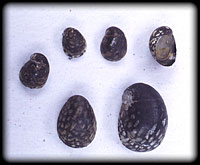 the variations in environmental factors. Examples among ephemerids are two common species, Baetis alpinus - which shows a great frequency in mountain areas with stoney bottom - and Baetis scambus, which in turn is frequent in courses of 300-400 m elevation with gravelly bed. The same thing can be learned in case of caddisflies, where on areas of the highest elevation the menbers of the family Rhyacophylidae, while on lower areas coming from the mountains, and on lowlant parts the members of families Limnephilidae and Hydropsychidae are mor common. We have to tell, that other species typical to mountain courses are present in the Tisza only in a very low number of species and individuals, if they are present at all, thanks to floods of considerable measure, which temporarily wash down the debrish serving as a substrate. Among mollusks on mountain courses one very sparse and therefore very valuable from nature conservational point of view, "brook cap snail" (Ancylus fluviatilis) is typical. the variations in environmental factors. Examples among ephemerids are two common species, Baetis alpinus - which shows a great frequency in mountain areas with stoney bottom - and Baetis scambus, which in turn is frequent in courses of 300-400 m elevation with gravelly bed. The same thing can be learned in case of caddisflies, where on areas of the highest elevation the menbers of the family Rhyacophylidae, while on lower areas coming from the mountains, and on lowlant parts the members of families Limnephilidae and Hydropsychidae are mor common. We have to tell, that other species typical to mountain courses are present in the Tisza only in a very low number of species and individuals, if they are present at all, thanks to floods of considerable measure, which temporarily wash down the debrish serving as a substrate. Among mollusks on mountain courses one very sparse and therefore very valuable from nature conservational point of view, "brook cap snail" (Ancylus fluviatilis) is typical.
|
|
In the river arriving to the Great Plain within bed material sand becomes more and more definitive beside gravel. As far as the mouth of Szamos the fauna of this section os colourful and rich, very considerable from the viewpiont of nature conservation. Its nature conservation value however is represented not only by the occurrence of one or two rare species, but the course of the Upper Tisza itself, as a habitat emerges with its unique conditions. All this is true even when we know, the most drastic intervention has been made just on this section during river control, and even if the nature conservation value of the area is very high, restriction of more sensitive species sign exactly the effect of interventions.
|
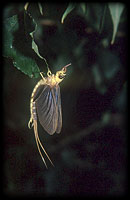
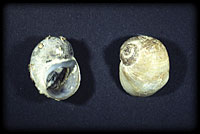 Invertebrate fauna is still dominated by ephemerids, within them species of the genus Heptagenia. "Tisza-dayfly" (Palingenia longicauda) appears on this course, which lives already exclusively only in the Tisza and some tributaries. Beside ephemerids, stoneflies and caddisflies the proportion of species belonging to other groups increases singificantly. Among snalis most frequent species are "gravel snail" (Lithoglyphus naticoides), "viviparous snali" (Viviparus acerosus), "round mouth snail" (Valvata piscinalis), among bivalves all three species of unios (Unionidae), "wandering shellfish" (Dreissena polymorpha), "globe shellfish" (Sphareium) and "pea shellfish" (Pisidium) are worthy of mention. Beside these, lacustrine shellfish species preferring muddy bottom (Anodonta, Pseudanodonta), and the alien Amur shellfish (Synanodonta woodiana) appear already here.
Invertebrate fauna is still dominated by ephemerids, within them species of the genus Heptagenia. "Tisza-dayfly" (Palingenia longicauda) appears on this course, which lives already exclusively only in the Tisza and some tributaries. Beside ephemerids, stoneflies and caddisflies the proportion of species belonging to other groups increases singificantly. Among snalis most frequent species are "gravel snail" (Lithoglyphus naticoides), "viviparous snali" (Viviparus acerosus), "round mouth snail" (Valvata piscinalis), among bivalves all three species of unios (Unionidae), "wandering shellfish" (Dreissena polymorpha), "globe shellfish" (Sphareium) and "pea shellfish" (Pisidium) are worthy of mention. Beside these, lacustrine shellfish species preferring muddy bottom (Anodonta, Pseudanodonta), and the alien Amur shellfish (Synanodonta woodiana) appear already here.
|
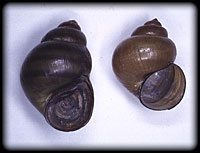
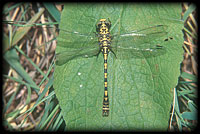 Among mollusks we have to emphasize the very sparse "jar snail" (Theodoxus transversalis). All four species of the family of riverine dragonflies (Gomphidae) occur here. Two of them, the "black-legged dragonfly (Gomphus vulgatissimus) most common in the Tisza, and "yellowish dragonfly" (G. flavipes) can be found in the total length of the Hungarian part of the Tisza, while "brooklet dragonfly" (Onychogomphus forcipatus) and forest-dragonfly" (Ophiogomphus cecilia) live only in the Upper TIsza. Beside these damselfly (Calopteryx splendens or Agrion splendens) and "flat-legged damselfly" (Platycnemis pennipes) are very common. Crustaceans (Crustaceae) are important members of benthonic life. Most common species are water-flea species, such as Corophium curvispinum and Dicerogammarus species. There are significant stocks of crayfish (Astacus leptodactylus). Below the mouth of Szamos, because of its contamination many sensitive species disappear. On the lowland course of the river together with the decreasing stream and the increase of plant nutrients, proportion of planctonic life increases, the presence of which is greatly influenced by the presence of available food organisms and floods. Number of individuals of wheel animalcules (Rotatoria) shows mostly a spring-autumn peak, with euplanctonic elements (Keratella spp., Polyarthra spp. and Synchaeta spp.) in highest proportion. Among small crustaceans species of water-fleas (Cladocera) and copepods (Copepoda) appear alike. Plant and animal life of the Kiskör Tisza course and the adjacent reservoir differs significantly from that of other sections of the river. Here as a result of damming
Among mollusks we have to emphasize the very sparse "jar snail" (Theodoxus transversalis). All four species of the family of riverine dragonflies (Gomphidae) occur here. Two of them, the "black-legged dragonfly (Gomphus vulgatissimus) most common in the Tisza, and "yellowish dragonfly" (G. flavipes) can be found in the total length of the Hungarian part of the Tisza, while "brooklet dragonfly" (Onychogomphus forcipatus) and forest-dragonfly" (Ophiogomphus cecilia) live only in the Upper TIsza. Beside these damselfly (Calopteryx splendens or Agrion splendens) and "flat-legged damselfly" (Platycnemis pennipes) are very common. Crustaceans (Crustaceae) are important members of benthonic life. Most common species are water-flea species, such as Corophium curvispinum and Dicerogammarus species. There are significant stocks of crayfish (Astacus leptodactylus). Below the mouth of Szamos, because of its contamination many sensitive species disappear. On the lowland course of the river together with the decreasing stream and the increase of plant nutrients, proportion of planctonic life increases, the presence of which is greatly influenced by the presence of available food organisms and floods. Number of individuals of wheel animalcules (Rotatoria) shows mostly a spring-autumn peak, with euplanctonic elements (Keratella spp., Polyarthra spp. and Synchaeta spp.) in highest proportion. Among small crustaceans species of water-fleas (Cladocera) and copepods (Copepoda) appear alike. Plant and animal life of the Kiskör Tisza course and the adjacent reservoir differs significantly from that of other sections of the river. Here as a result of damming 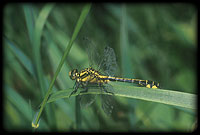 interesting mosaical living communities of high nature conservation value have been formed, in which paludal, lacustric and riverine elements mix. On the lower course of the river the picture of the sediment fauna is determined by lowland species. Beside higher nutrient content of the water mud and clay is characteristic of the sediment. Beside groups described above larvae of midges (Chironomidae) and annelids (Oligochaeta) demanding lesser oxygen content are given a gradually major role. In the sediment of the streamline larvae of arthropod groups dominate, while in bank regions amount of species of annelids is greater. interesting mosaical living communities of high nature conservation value have been formed, in which paludal, lacustric and riverine elements mix. On the lower course of the river the picture of the sediment fauna is determined by lowland species. Beside higher nutrient content of the water mud and clay is characteristic of the sediment. Beside groups described above larvae of midges (Chironomidae) and annelids (Oligochaeta) demanding lesser oxygen content are given a gradually major role. In the sediment of the streamline larvae of arthropod groups dominate, while in bank regions amount of species of annelids is greater.
|
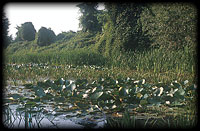 We have to speak about the invertebrate fauna of forenabks along the Tisza and that of dead beds of the protected side, since - because stagnant waters are in question - life of them differs for the most part from that of the river. These water spaces are characterized by large number of individuals of stagnant water species, though there are considerable differences between certain mortlakes. Their fauna is basically determined by the state of filling up, possibility of water supply and their utilization. In general it can be told, that mortlakes with permanent water supply, having both open water surface and those covered by waterweeds, possess the richest fauna. Here from time to time riverine elements appea as well, but primatily stagnant water elements dominate. Arthropod fauna of such areas is very rich; water beetles (Coleoptera) e. g. Cybister laterimarginalis, whirligig beetles (Gyrinidae) etc.; water bugs (Heteroptera) such as water spiders or pond skaters (Gerridae), water scorpion (Nepa cinerea), back swimmers (Notonectidae), etc.; mosquitos (Culicidae) and midges (Chironomidae) are typical. Among dragonflies "marsh libellula" (Anaciaeschna isosceles), "two dotted dragonfly" (Epitheca bimaculata) and "puddle dragonfly" (Leucorrhinia caudalis) live here. Common species are are "blue hunter" (Ischnura elegans), We have to speak about the invertebrate fauna of forenabks along the Tisza and that of dead beds of the protected side, since - because stagnant waters are in question - life of them differs for the most part from that of the river. These water spaces are characterized by large number of individuals of stagnant water species, though there are considerable differences between certain mortlakes. Their fauna is basically determined by the state of filling up, possibility of water supply and their utilization. In general it can be told, that mortlakes with permanent water supply, having both open water surface and those covered by waterweeds, possess the richest fauna. Here from time to time riverine elements appea as well, but primatily stagnant water elements dominate. Arthropod fauna of such areas is very rich; water beetles (Coleoptera) e. g. Cybister laterimarginalis, whirligig beetles (Gyrinidae) etc.; water bugs (Heteroptera) such as water spiders or pond skaters (Gerridae), water scorpion (Nepa cinerea), back swimmers (Notonectidae), etc.; mosquitos (Culicidae) and midges (Chironomidae) are typical. Among dragonflies "marsh libellula" (Anaciaeschna isosceles), "two dotted dragonfly" (Epitheca bimaculata) and "puddle dragonfly" (Leucorrhinia caudalis) live here. Common species are are "blue hunter" (Ischnura elegans), 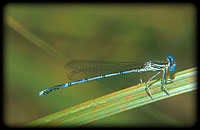 "leaf-legged damselfly" (Platycnemis pennipes), "water shepherd" (Orthetrum cancellatum). Among mollusks common species are paludal snail (Lymnaea) species living among aquatic plants, "sharp snail" (Planorbis planorbis) and "large plate snail" (Planorbarius corneus), and "plate snail" (Anisus vortex) and "button snail" (Segmentina nitida). Shield snail (Acroloxus lacustris) belongs rather to sediment fauna. Among bivalves lacustric shellfis (Anodonta, Pseudanodonta and Synanodonta) species dominate. Annelids (Oligochaeta) are present in sediment fauna in a great proportion. Carnivore and ectoparasitic Leech (Hirudinea) species, linking rather to plants, occur here also in a significant number. In dead beds lacking water supply, because frequently appearing absence of oxygen only species tolerating paludal conditions can be found. Circuits of dead beds with angling utilization is determined primarily by settles fish species, here the excess of planctonic life is typical. "leaf-legged damselfly" (Platycnemis pennipes), "water shepherd" (Orthetrum cancellatum). Among mollusks common species are paludal snail (Lymnaea) species living among aquatic plants, "sharp snail" (Planorbis planorbis) and "large plate snail" (Planorbarius corneus), and "plate snail" (Anisus vortex) and "button snail" (Segmentina nitida). Shield snail (Acroloxus lacustris) belongs rather to sediment fauna. Among bivalves lacustric shellfis (Anodonta, Pseudanodonta and Synanodonta) species dominate. Annelids (Oligochaeta) are present in sediment fauna in a great proportion. Carnivore and ectoparasitic Leech (Hirudinea) species, linking rather to plants, occur here also in a significant number. In dead beds lacking water supply, because frequently appearing absence of oxygen only species tolerating paludal conditions can be found. Circuits of dead beds with angling utilization is determined primarily by settles fish species, here the excess of planctonic life is typical.
|